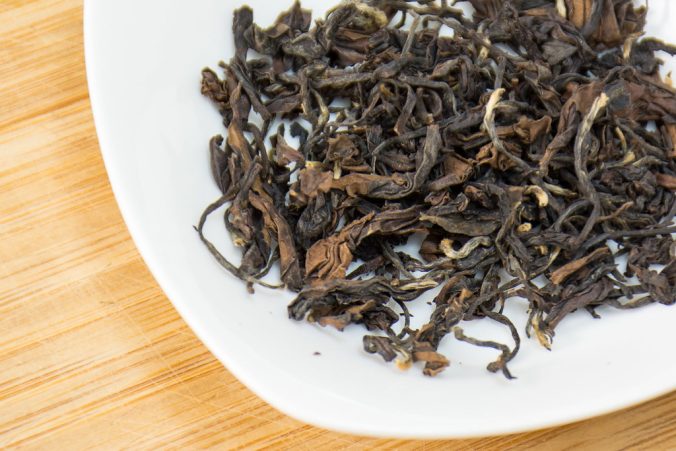Table of Contents
- All about oolong tea and how to brew the perfect cup
- What Is Oolong Tea?
- What Makes Oolong Tea Unique?
- Preparing Your Equipment
- Selecting the Right Oolong Tea
- Determining the amount of tea to use
- Water Temperature for Brewing Oolong Tea
- Steeping Times for Different Types of Oolong Tea
- Different Brewing Methods for Oolong Tea
- Serving and Enjoying Oolong Tea
- Storing oolong tea
- Health benefits of oolong tea
- Common Mistakes to Avoid When Brewing Oolong Tea
- Alternatives to Brewing Oolong Tea
- Frequently Asked Questions About Oolong Tea
- Troubleshooting Tips for Brewing Oolong Tea
- How Does Oolong Tea Compare to Black Tea?
- Conclusion to our Oolong Tea Guide
All about oolong tea and how to brew the perfect cup
In China and Taiwan, making oolong tea is an art that has been perfected over hundreds of years. As a tea expert, I’m here to show you how to make the perfect cup of this delicious beverage! Oolong teas are unique among all other types of teas due to their complex flavor profiles and intricate processing methods. From light-bodied floral notes to bold roasted chestnut flavors, there’s something for everyone when it comes to brewing oolong tea. With my help, you’ll learn the ins and outs of making the perfect pot of this ancient elixir.
In this guide, we’ll cover everything from choosing quality ingredients to mastering water temperature so that your next cup of oolong will be one for the record books! Whether you’re looking for a light morning refreshment or an after-dinner treat, understanding the basics of brewing oolong can elevate any experience with this beloved drink. And if you follow these tips closely, you can create variations on traditional recipes while still maintaining their authentic taste profile.
So let’s get started! Here’s what you need to know about brewing oolong tea like a master: techniques, temperatures, aromas—it all matters when creating the ultimate cup of heavenly goodness! With my knowledge combined with yours, together we’ll explore every aspect necessary to become experts in crafting the ideal brew. Let’s dive into discovering how to craft an unforgettable cup of aromatic excellence!
What Is Oolong Tea?
Let’s get started at the very first aspect of all things, and that is where did it first start and all about its history!
Oolong tea is a traditional Chinese beverage made from the leaves of Camellia sinensis, the same species that produces green and black teas. It is made with different methods that give it a unique flavor profile that ranges from sweet and fruity to floral and roasted. Oolong tea has become increasingly popular in recent years due to its health benefits; such as raised metabolism, improved fat-burning ability, lower stress lowered once, and better digestion.
When it comes to brewing oolong tea, loose leaf oolong is always preferred over the pre-packaged varieties because the quality of the tea can be higher and you can customize your brew according to your taste preferences. Traditional oolong tea brewing methods involve steeping the tea multiple times with hot water at different temperatures for varying amounts of time until it achieves the desired strength or complexity in taste. This method is known as Gong Fu Cha (or Kung Fu Tea), which offers an incredibly rich experience when properly done.
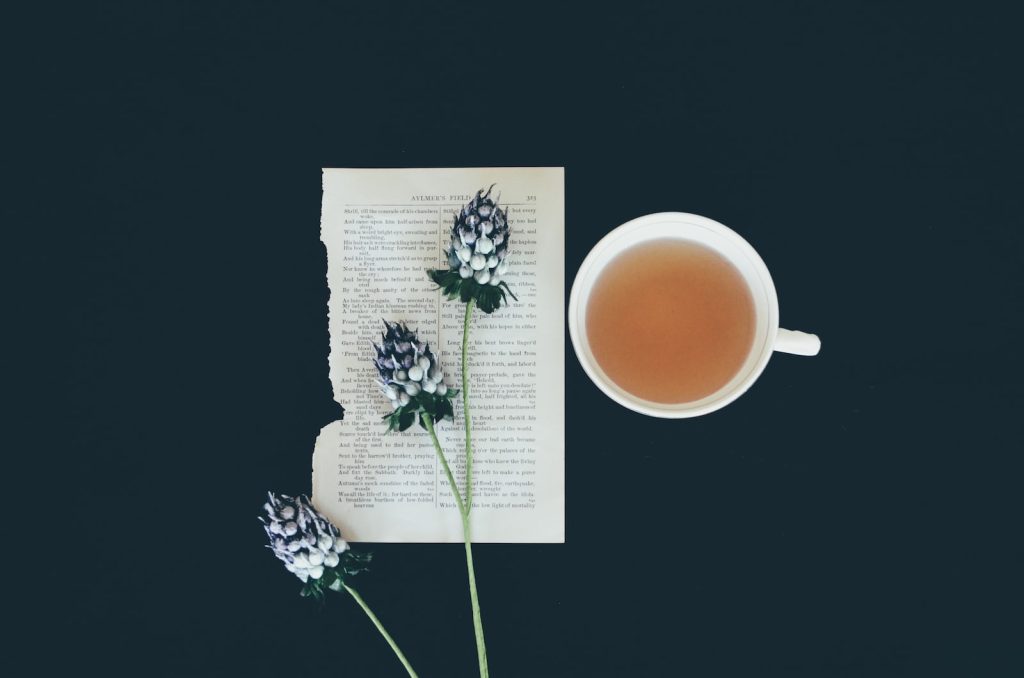
Brewing oolong tea requires patience, but by following certain steps, one can easily master this art and make some delicious cups of this amazing drink. Start by heating enough water, then adding 1 teaspoon of loose leaf oolong per cup into a strainer or infuser placed inside the cup or teapot. Pour hot water over the leaves slowly so they can absorb the liquid evenly while giving off their aroma and flavors before pouring it out after 3-5 minutes, depending on how strong you prefer it. Repeat these steps several times if you want a stronger brew, with each step becoming slightly less intense than the previous one.
What Makes Oolong Tea Unique?
Tea experts know that oolong tea is much more than just a beverage. It’s an art form, with its own unique brewing technique that makes it stand out from other teas like green and black tea. As if this weren’t enough to distinguish it from the pack, there are several things about oolong that make it truly special:
First off, the leaves of oolong tea come in all shapes, sizes, and colors—something you don’t often find when dealing with other types of tea.
Secondly, unlike many teas, which require a specific kind of equipment such as a gaiwan or yixing pot to brew correctly, oolong can be brewed using any type of vessel as long as the temperature is right.
Thirdly, because oolong has been fermented longer than most other varieties of tea, it retains some of its natural sweetness even after being steeped for too long. Finally, due to its unique fermentation process, oolong offers up an incredibly rich flavor profile full of nutty and fruity notes that you won’t find anywhere else!
The key to getting these amazing flavors to come out is to perfect the way each type of leaf-grade oolong is brewed. This requires careful consideration not only on how best to extract the flavor but also on what water temperature will bring out the best taste possible. With practice and patience, however, comes great reward; those who master this skill can enjoy delicious cups of freshly brewed oolong every time they prepare their favorite blend.
As we’ve seen here today, making good quality oolong is no small feat, but it’s certainly worth doing for anyone who loves a cup of flavorful greatness!
Preparing Your Equipment
When it comes to brewing oolong tea, the right preparation and equipment can make a big difference. It’s important for tea enthusiasts to understand the various items in their tea set and how they should be used when preparing this unique beverage.
The first step is selecting an appropriate vessel for your oolong tea. A traditional Chinese or Taiwanese teapot made of Yixing clay is ideal due to its porous nature; it absorbs some of the flavors as you brew, making each cup more flavorful. Alternatively, if you’re looking for something simpler, you could use a glass teapot or even just boiling water poured over loose leaves in a teacup.
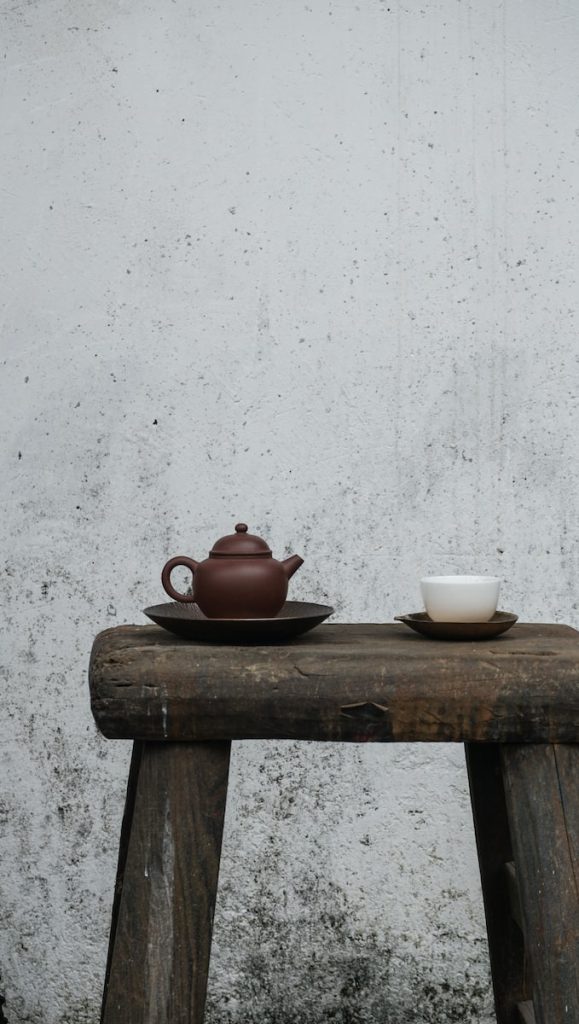
Finally, once you have all your necessary equipment gathered together (tea set, cups, etc.), you’ll need to measure out your ingredients according to taste preference: 2–3 grams of dried oolong per 8 ounces of water are recommended. Once everything is ready and in place, simply follow the instructions on the packaging and enjoy!
Brewing up a delicious cup of oolong requires knowing what kind of vessel will work best along with the proper measurement. Once these details are handled properly, there’s nothing left but to dive into that wonderful aroma and savor every sip!
Selecting the Right Oolong Tea
Ah, the sweet smell of freshly brewed oolong tea in your cup! To experience this perfect moment and unlock its full potential, selecting the right type of oolong tea is essential. It can be an overwhelming task to choose one out of the many varieties available on the market today; however, it doesn’t have to be complicated. As a tea expert, let me give you some tips that will help you select the best oolong tea for brewing:
- Consider what type of tea appeals to your palate: there are various types of oolong teas, such as green oolong, Wuyi rock oolong, dark oolong, and more, each with its own unique flavor profile.
- Research different kinds of quality teas: look into top-notch brands as they often offer superior products due to rigorous production processes that guarantee a consistent taste from batch to batch.
- Taste-test samples before making a purchase decision: try small amounts of each variety so you can compare notes about their flavors, aromas, and textures. This way, you’ll get an idea of how it would taste when brewed or steeped properly.
- Check expiration dates: only buy high-quality teas that come in airtight packaging and bear clear labels indicating when they were produced or packaged and the expiration date (if any).
- Understand where the leaves were grown: different regions create distinct tasting profiles depending on soil composition and climate conditions—explore them all!
Remember that enjoying a good cup of fresh oolong tea requires patience and time to find the right type for you, but once you do, you won’t regret it. So take your time picking out the ideal blend and savor every sip, knowing you’ve made an excellent choice.
Determining the amount of tea to use
Making the perfect cup of oolong tea is an art that requires finesse and precision. To ensure success, it’s important to get the amount of tea just right! The good news is that brewing up a delicious cup of tea doesn’t have to be overly complicated; by following this simple guide, you can easily figure out how much tea to use each time.
When determining the proper ratio of tea leaves per cup, start with 2 grams of oolong for every 6 ounces of water, or 1 teaspoon of loose leaf oolong per 8–10 ounces of water. For example, if you’re making 3 cups (24 ounces) of oolong, you would need 4 teaspoons (12 grams) of tea leaves. Alternatively, if you’re using a teabag, simply opt for one bag per cup, as these usually contain enough tea for single servings.
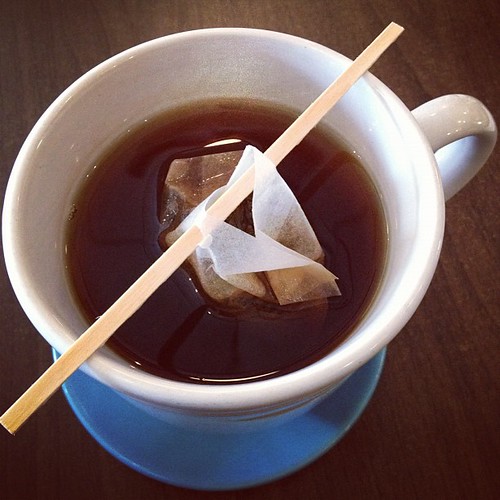
Once you’ve settled on your desired amount of tea leaves, bring a pot full of fresh water to a boil, then pour it over your measured amount of oolong in either a teapot or strainer basket. Allow the tea to steep for about 3 minutes before pouring it into cups and enjoying it! It really is that easy—no more guesswork is required! With some practice, you’ll soon become an expert at figuring out exactly which amounts work best for you when crafting your favorite blends.
Water Temperature for Brewing Oolong Tea
Brewing oolong tea is an art form, and the water temperature plays a crucial role in getting your perfect cup of tea. Whether you’re a beginner or a seasoned expert, it’s important to understand how to brew oolong tea correctly. Here are our tips for getting just the right water temperature when brewing oolong tea.
Firstly, high-quality loose-leaf oolong teas require cooler temperatures than green or black teas. Generally speaking, if you use boiling water over 195°F (90°C) for some types of oolong tea leaves, then you will end up with a bitter taste that overwhelms any subtlety in the flavor profile of the tea. To avoid this from happening, aim for lower temperatures around 180–185°F (82–85°C). However, some darker roasted varieties may take higher temperatures well.
The best way to know exactly what temperature works best for the type of oolong you’re using is to experiment—try using different temperatures each time and note down which ones work better so that you can fine-tune your technique as you go along. Make sure to keep track of all variables, like steeping times and amounts of tea used, too! With practice, patience, and attention to detail, you’ll be able to master the art of brewing oolong tea without having to worry about whether your water temperature was right or wrong ever again!
Steeping Times for Different Types of Oolong Tea
Brewing oolong tea is an art that requires finesse and an understanding of the leaves. It’s like reading a story; each type provides its own unique flavor, aroma, and even color. As an experienced tea brewer, I know how to tease out these flavors through careful brewing practices.
When it comes to steeping times for different types of oolong tea, there are some general rules you can follow. Loose leaf oolong teas should be steeped between 3–5 minutes, depending on desired strength; if you prefer lighter brews, steep closer to 3 minutes, while those who enjoy stronger cups may want to go up to 5 minutes. Oolong tea can also be re-steeped multiple times with increasing time intervals (such as five minutes per subsequent infusion). This will lead you down new roads of flavor discovery!
The key is experimentation—taste your cup at different intervals and find what works best for you. Through trial and error, you’ll soon enough master the art of crafting the perfect cup of oolong every single time!
Different Brewing Methods for Oolong Tea
Brewing oolong tea can be a journey of discovery and delight. There are many ways to go about it, each with its own unique benefits. Whether you opt for the traditional Gong Fu Cha style or choose to keep things simple with a western approach, there is an ideal brewing method for everyone.
The traditional Chinese Gong Fu tea ceremony has been around for centuries, making use of loose-leaf tea and multiple small teacups. This complex yet elegant practice involves precise timing and carefully calculated ratios; however, it can take some getting used to. Mastering this art form requires patience and experience, but if done correctly, the results will be remarkable!
For those who would rather not dive too deeply into the nuances of Asian brewing techniques, there is always the option of using a simplified Western-style preparation process. This method typically involves steeping oolong tea in hot water for several minutes—usually between three and five minutes, depending on your taste preference—before removing the leaves from the solution. With this tried-and-true technique, producing delicious cups of oolong tea is easy and hassle-free.
No matter what brewing method you choose, taking time to experiment with different teas and times will ensure that you find the perfect cup of oolong every single time!
Serving and Enjoying Oolong Tea
Once you have brewed your oolong tea using one of the methods mentioned, it is now time to serve and enjoy this delicious beverage. When pouring the tea into cups, make sure that each cup has been warmed up first in order to ensure its flavor comes out as intended. A good way to warm up a cup is to pour some hot water into it before adding the oolong tea.
In terms of serving size, try starting with two teaspoons of loose-leaf tea for every 8 ounces (or 1 cup) of water. This will give you an idea of how much tea is needed for future batches or for larger servings if desired. If you’d like a stronger flavor from your brew, add more teaspoons instead of brewing the same amount longer; doing so can result in over-brewed and bitter-tasting cups of tea.
When enjoying your freshly brewed oolong tea, here are some points to keep in mind:
- Pour the tea slowly when transferring it from the pot to the mug; this allows all the flavors within the liquid to be experienced fully by those drinking it.
- Make sure not to fill any one cup too much; most people prefer smaller cups of their favorite teas.
- Taste test at regular intervals while brewing; this helps you adjust strength and sweetness levels depending on what you prefer.
Oolong Tea offers many different flavors that vary depending on where they’re sourced, how long they’ve been stored, and even how they were brewed, so go ahead and experiment until you find something that suits your taste buds! Remember that no one knows better than yourself what kind of flavor would best suit your needs, so take pride in finding something truly unique that brings out all the subtle nuances locked away inside these dry little leaves.
Storing oolong tea
When it comes to storing oolong tea, there are some key points to keep in mind. Loose-leaf teas should always be stored properly; when dealing with oolongs specifically, this is especially true. Brewed oolong can last for up to four days if kept chilled, but unbrewed loose leaf tea will retain its flavor and quality longer if it’s stored correctly.
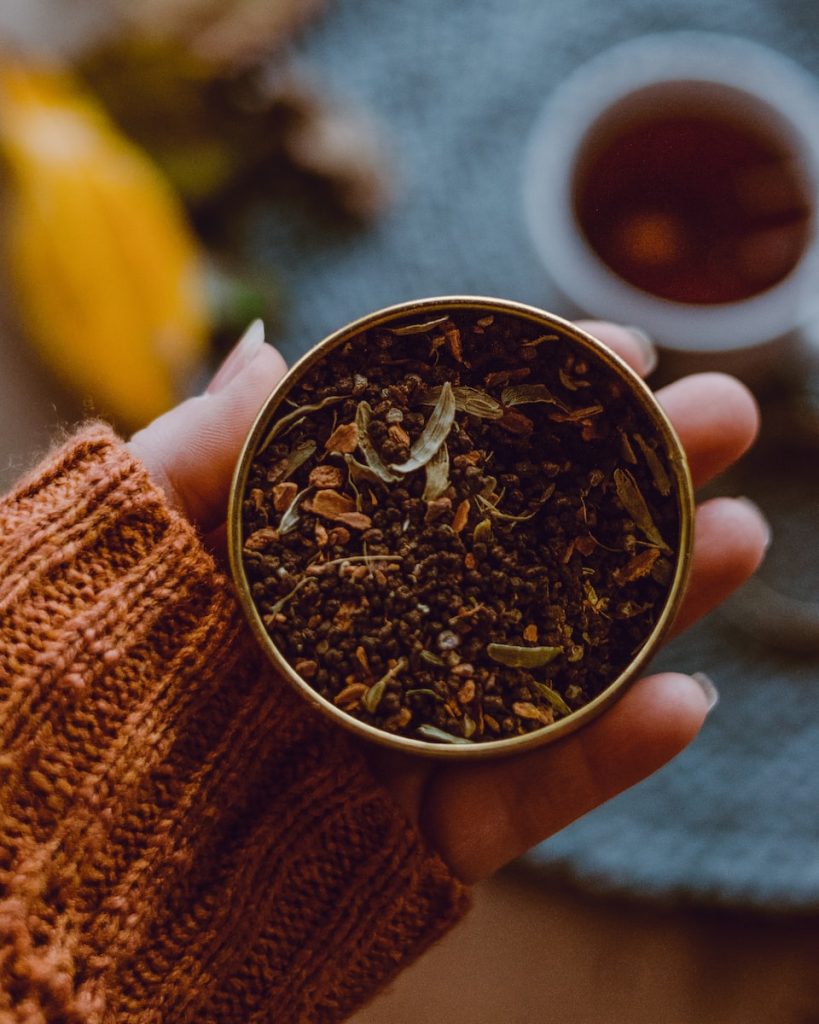
To make sure your oolongs stay tasty and fresh, make sure the bag or container you store them in doesn’t let air in. Choose a cool, dark place away from moisture and direct sunlight as well; these two elements can damage the leaf’s delicate flavors quickly. Additionally, it’s important that whatever storage method you use doesn’t have any strong odors that could influence the taste of your tea over time.
Finally, one thing most people don’t consider when storing oolong tea is to avoid using distilled water when brewing later on—something that many unaware individuals do without realizing it affects the flavor profile of their brews significantly! Instead, heat your water carefully before pouring it over the tea leaves; this will preserve all those delicious nuances found within each variety of oolong even further.
Health benefits of oolong tea
Did you know that drinking a cup of oolong tea every day can help reduce the risk of obesity and type-2 diabetes? This is just one of many health benefits associated with this ancient Chinese beverage. Oolong tea has been used for centuries as an effective way to relax, detoxify, and improve overall well-being. Let’s explore why brewing a hot cup of oolong tea is good for your health.
First, it helps the body burn fat faster. When brewed correctly, oolong tea leaves produce compounds that stimulate your metabolism and promote weight loss. In addition, the antioxidants present in oolong are known to boost energy levels while also fighting inflammation.
Second, regular consumption of oolong tea can lower cholesterol levels and blood pressure. Studies have shown that regularly consuming two or more cups per day can significantly decrease total bad (LDL) cholesterol concentrations in the bloodstream. Furthermore, drinking a daily cup of oolong tea may make it easier to manage hypertension because its natural properties have anti-inflammatory effects on arterial walls over time.
Finally, those who drink oolong often experience improved digestion due to its high concentration of polyphenols, which are beneficial for gut health. Its antiviral qualities also protect against common illnesses such as colds and flu by boosting immunity naturally through mineral absorption from the green and black tea leaves extracted when brewing the drink. Make sure you follow traditional methods for optimal benefit!
Common Mistakes to Avoid When Brewing Oolong Tea
Brewing oolong tea is an art form. If you don’t get it right, the tea won’t taste as good, and you will miss out on its health benefits. As a world-renowned tea expert, I’ve seen many beginners make common mistakes when brewing this delicious beverage. Let me help you avoid them so that you can enjoy all of the flavor and health benefits that come with drinking oolong tea!
To begin, never boil water for more than one minute before adding your tea leaves. Boiling water for too long can impact both the taste and nutrient content of your drink. Instead, bring your water to a rolling boil, then turn off the heat immediately; wait 30 seconds until the bubbles subside, and add your loose tea leaves or bagged tea into the pot or cup.
There are several other key rules to follow while making oolong tea:
- Use only fresh springwater; if not available, use filtered tap water.
- Don’t over brew; remove tea leaves after 5 minutes.
- Never reuse old tea leaves in new batches.
- Always clean your teapot between brews to remove any tannin residue left by previous steeps.
As much as we would like every cup of oolong tea to be perfect, this is not always the case! But by following these simple steps outlined above, you’ll have consistently great-tasting cups of richly flavored oolong every time without fail! So go ahead and give it a try today; you won’t regret it!
Alternatives to Brewing Oolong Tea
Brewing oolong tea is a time-honored tradition and the best way to enjoy its complexity and nuance. But if you’re in a pinch for time or just looking for something different, there are alternatives available. Cold-brewing oolong tea offers an array of benefits that make it worth considering when searching for your preferred way to brew this beloved Chinese beverage.
The main benefit of cold brewing oolong tea is that it makes extracting flavor easier while also reducing bitterness. With hot brewing, it can be hard to get the right balance between extracted flavor and bitterness. For those who want more than the usual cup of oolong but don’t want to take on too much risk, cold brews provide an excellent option. It’s also possible to steep multiple times with cold water without worrying about oversteeping, so you’ll always get the best flavor from your favorite teas!
Lastly, another advantage that comes with cold brewing is that it requires fewer leaves per cup
- This means less waste and greater cost efficiency compared to other methods of preparation. Additionally, because most of the caffeine is released at high temperatures,
- cold-brewed teas tend to have lower levels of stimulants
- All things considered, for people looking for quickness and convenience as well as great taste and health benefits
- cold brewing oolong is definitely worth trying out!
Frequently Asked Questions About Oolong Tea
All teas—green, black, or oolong—can be brewed using loose-leaf or bagged forms. The important thing is to make sure your ingredients are up to scratch so you achieve the perfect cup each time. That means boiling fresh water and selecting quality oolong tea leaves; if you skimp on either then don’t expect much flavor out of your cuppa!
This depends on personal preference, but generally speaking, it should take 3–5 minutes for the first infusion when making oolong tea.
When it comes to brewing a cup of tea, many people are familiar with traditional green tea. However, there is another variety that deserves attention: oolong tea. Oolong and green teas have some similarities and differences that should be considered when deciding which type to brew.
Oolong tea is made from Camellia sinensis leaves that have only been partially oxidized, while green tea hasn’t been changed much after being picked. This difference in processing gives each of them its distinct flavor profiles; oolong offers a more complex taste than its greener counterpart. Additionally, oolong ranges in color depending on the oxidation level and, among other factors, the soil composition or elevation where it was grown. Green tea remains fairly consistent throughout production.
Though both types of tea offer health benefits, studies suggest that the antioxidant levels found in oolong can be up to three times higher than those in green teas. Even though they have the same amount of caffeine, oolongs tend to make you feel more energized because they have a unique mix of antioxidants and amino acids. Therefore, if you’re looking for something tasty yet beneficial, then perhaps sampling an oolong tea would be worthwhile!
Let’s start by noting how wonderfully unique oolong is compared to other teas like green tea. Not only does it have more antioxidants than other teas, but the amount of caffeine in it depends on how it was made. For instance, light-roasted oolongs tend to have less caffeine, whereas dark-roasted ones usually carry more.
Of course, this isn’t set in stone, as there are a lot of factors that can influence one’s individualized experience with these drinks. For example, if an individual consumes multiple cups throughout the day or prepares their beverage at home using larger amounts of tea leaves for longer steeping times, then they may be ingesting greater quantities of caffeine than usual.
So, when brewing your own cup of delicious oolong, pay attention not only to its exquisite flavor but also to the energy boost it provides! By doing this, you’ll make sure that your cup of coffee tastes great and gives you the boost you need every day.
Brewing oolong tea is like a dance, one that requires skill and finess to get right. With the right mix of water temperature and steeping time, you can bring out the subtle aromas of the leaves. Here’s what you need to know:
A good-quality oolong will last up to 10 infusions.
Use filtered or spring water for brewing
Measure 1-2 teaspoons per 8-oz cup of boiling water (94-95 oC).
As any experienced tea connoisseur knows, it’s important to not overstep your loose leaf oolong; this can result in a bitter taste. Generally speaking, most varieties should steep for 3–5 minutes, depending on desired strength. If possible, let the brewed tea cool slightly before drinking so that all of its complexity can shine through. For an extra-special treat, adding just a few drops of honey helps bring out subtle flavors!
The freshness and flavor of your oolong tea can remain intact if stored properly. Make sure to store it away from light and air in an opaque container at room temperature; if done correctly, your favorite blend could stay flavorful for up to 6 months. Enjoy exploring different types and blends as they each offer their own
Brewing oolong tea is like a delicate dance; it requires the right balance of technique and knowledge to make a truly delicious cup. As an expert in this field, one question I’m often asked is whether or not oolong tea is good for weight loss. The answer might surprise you!
Oolong tea has natural compounds that can help boost your metabolism and reduce fat storage, making it an excellent choice if you’re looking to lose some pounds. It’s also got a range of other health benefits, as its antioxidants have been shown to lower cholesterol and blood pressure levels. However, keep in mind that any dietary change should be combined with regular exercise for the best results.
Not only can drinking oolong tea help you lose weight, but its slightly sweet flavor and calming aroma can also help you feel calm and clear-headed. So why not take a few moments out of your day to brew yourself a cup? Its effects on both body and mind will leave you feeling refreshed yet energized—what could be better than that?
Troubleshooting Tips for Brewing Oolong Tea
It’s a widely held belief that oolong tea is the most difficult type of tea to brew. But I’m here to tell you it doesn’t have to be! Brewing oolong tea can be straightforward and easy when you know what you’re doing. Here are some troubleshooting tips for getting the perfect cup of oolong every time.
The first step in brewing oolong tea is finding the right teapot or vessel. It should be made from materials such as ceramic, glass, cast iron, or porcelain so that heat can transfer evenly. The size of your vessel will depend on how many tea leaves you plan on using—anywhere between one teaspoon and two tablespoons per six ounces of water works great.
Once you’ve selected a suitable teapot and measured out your portion of loose-leaf tea, fill the pot with boiling water and let it steep for about three minutes, depending on the desired strength. This allows enough time for all the flavors and aromas within the tea leaves to infuse into the hot liquid without becoming bitter from overstepping. After this period, strain off any remaining solids before pouring into cups and enjoying!
Making a delicious cup of oolong isn’t rocket science—armed with these simple tips, brewing up a tasty batch has never been easier! With just the right combination of quality ingredients and proper technique, anyone can become an expert at making beautiful batches of fragrant oolong tea in no time.
How Does Oolong Tea Compare to Black Tea?
Oolong tea is an incredibly popular beverage, with over 52 million people drinking it in the US alone. However, when compared to black tea, which also enjoys a large following, there are some key differences that make oolong stand out from other teas. As a tea expert, I’d like to share exactly what sets oolong apart so you can determine if it’s right for you.
Unlike most other types of tea, oolong is only partially oxidized during production. This means that the leaves used to brew oolong have a unique flavor profile and texture that differ significantly from fully fermented black teas. Oolong’s semi-oxidization process results in naturally sweet notes along with vegetal and floral undertones, something that many describe as being closer to green tea than black tea. Because of this partial oxidation process, brewing times tend to be shorter than those used for black tea.
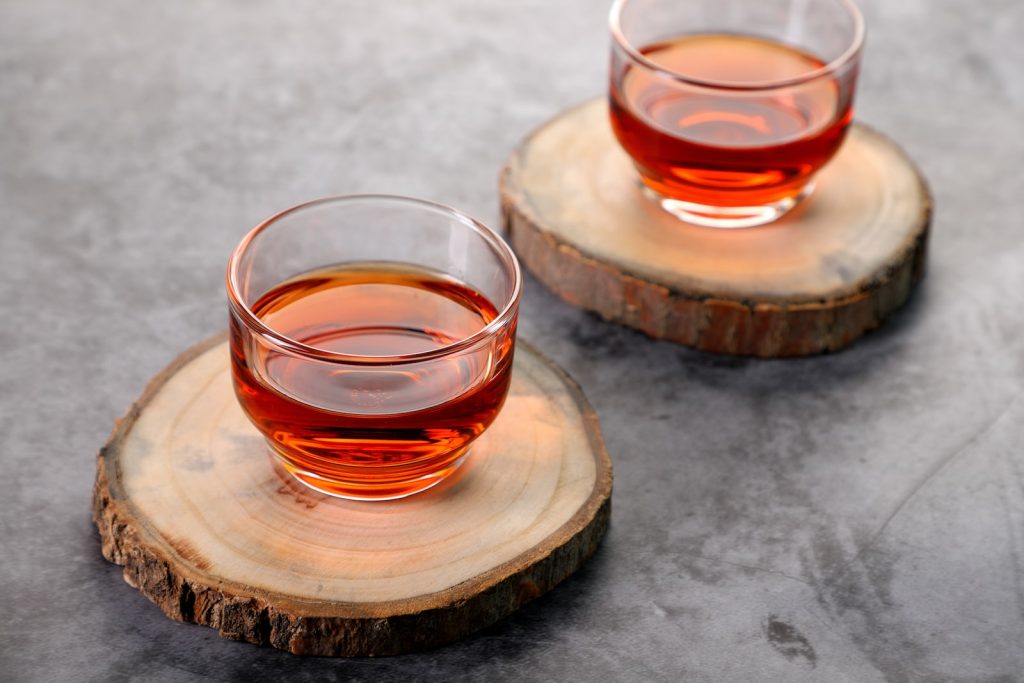
When you look at the possible health benefits of each type of drink, they both have a lot to offer. Studies have shown, for example, that the high levels of polyphenols and amino acids in both of these foods could help reduce anxiety. In addition, research has found that regular consumption of both may help protect against heart disease by boosting cholesterol levels, among other things. Nevertheless, one thing to keep in mind is that while oolongs are lower in caffeine than blacks (on average), they do still contain moderate amounts of caffeine, so those who are more sensitive should proceed with caution!
Conclusion to our Oolong Tea Guide
So there you have it tea lovers, our complete guide to Oolong tea. We know that it can be confusing… A) with all tea actually coming from one plant but being processed and brewed so differently that every cup is unique. And B) with all the other things being labeled as teas even when they aren’t. There really are no Herbal Teas, and we are guilty of this mislabeling as well.
But, at the end of the day it goes to show how wide of a variety of warm drinks there are out there and we hope we provided some clarity about Oolong tea, and everything that makes it special.
